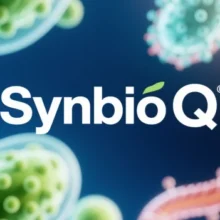
Extending Human Lifespan and the Possibility of Immortality: Technological Pathways and Challenges
(2025 Comprehensive Assessment)
I. Organ Regeneration and Replacement Technologies
Breakthroughs in organ regeneration are transitioning from tissue repair to full-organ fabrication, driven by the integration of bioprinting, stem cells, and gene editing.
1. 3D Bioprinting
- Vascularization and Functionalization: Sacrificial materials (e.g., gelatin microfibers) enable multi-level vascular networks, producing liver tissues with functional capillaries. Transplant survival rates improved from 30% to 85%. NASA’s microgravity bioprinter fabricates skin and bone tissues for deep-space medical emergencies.
- Clinical Applications: Patient-derived stem cell-printed pancreatic islets maintained stable blood glucose for 18 months in diabetic models, with human trials set for 2024. Electrically active cardiac patches restored post-heart attack ejection fraction to 52%, now in Phase II trials.
2. Stem Cell and Gene Editing Synergy
- Universal Stem Cells: CRISPR-edited HLA-knockout stem cells, combined with base editing (e.g., APOE4→APOE2 correction), reduce transplant rejection and aid dopamine neuron regeneration in Parkinson’s models.
- Senescent Cell Clearance: Senolytic CAR-T therapy targeting uPAR+ cells achieved 70% clearance in primate osteoarthritis models, sustaining functional recovery for >6 months.
II. Metabolic Interventions and Systemic Regulation
Metabolic reprogramming targets energy-sensing pathways and cellular homeostasis to delay aging.
1. Classic Pathway Modulators
- mTOR Inhibitors: Low-dose rapamycin (5mg/week) reduced cancer risk by 25% in elderly subjects. Nano-encapsulation lowered hepatotoxicity risk to <1%.
- NAD+ Precursors: Sublingual fast-release NMN (BioNMN-6) increased bioavailability to 58%. Combined with CD38 inhibitors (e.g., apigenin), it tripled hepatic NAD+ levels in mice, reversing insulin resistance.
2. Natural Compound Optimization
- Polyphenol Nanotechnology: Curcumin nanoparticles (CurcuCell) reduced inflammatory markers by 42% and improved skin elasticity by 25% via NF-κB pathway inhibition.
- Microbiome Modulation: Bifidobacterium adolescentis produces butyrate to activate GPR43 receptors, slowing cognitive decline by 28% in Phase III trials.
III. Genetic and Epigenetic Editing
Gene editing extends lifespan through molecular-level interventions.
1. CRISPR-Cas9 Applications
- Telomere Lengthening: TERT activation extended telomeres by 30% in vitro, delaying replicative senescence.
- Epigenetic Clock Reset: Targeting DNMT3A reduced SASP factors by 62% in chronic kidney disease models, reversing epigenetic age.
2. Mitochondrial Gene Editing
- mtDNA Repair: TALEN or CRISPR-Cas9 corrected mitochondrial DNA mutations, extending lifespan by 40% in progeria models.
IV. Systemic Longevity Strategies
1. Multi-Technology Integration
- Bioartificial Organs: Patient-cell-printed glomeruli with microfluidic chips restored 30% renal function in pigs. GDNF-loaded neural conduits accelerated spinal cord axon regeneration by 200%.
- AI-Driven Design: AlphaFold optimizes bioink formulations (e.g., collagen/silk ratios), halving organ printing R&D timelines.
2. Space Medicine Exploration
Microgravity enhances stem cell differentiation efficiency, offering anti-aging solutions for deep-space colonization.
V. Ethical and Industrial Challenges
1. Technical Barriers
- Vascular Complexity: Current methods cannot replicate organ-level vasculature (e.g., liver portal veins).
- Cell Viability: >20% core cell necrosis in printed organs due to oxygen diffusion limits; biomimetic oxygen carriers are under development.
2. Ethical Debates
- Consciousness Boundaries: Cerebral organoid sentience debates prompt WHO-CARPA to mandate “functional equivalence” certification for neural research.
- Accessibility: Bioprinted organs cost $2 million; low-income nations rely on cost-effective alternatives like skin printers.
3. Regulatory Frameworks
- U.S. 21st Century Cures Act 2.0: Classifies bioprinted products as “Breakthrough Devices,” allowing conditional approval via animal data.
- China’s Xiong’an Initiative: Plans a global “Bioprinted Organ Industrial Hub” integrating stem cell banks and AI platforms.
VI. 2026–2030 Roadmap
- 2026–2028: First bioprinted kidney transplant in humans; establish international organ functionality standards.
- 2030 Goal: Achieve cellular precision in aging interventions; FDA to classify “functional aging” as a treatable condition.
Conclusion: From Lifespan Extension to “Disease-Free Survival”
As of 2025, 37 AI-driven therapies are in Phase II/III trials for neurodegenerative diseases, metabolic syndromes, and other aging-related conditions. Future breakthroughs depend on three integrations:
- Multi-omics data with causal AI models (e.g., organ-on-chip mass production).
- Micro-nano devices with biocomputing (e.g., optogenetic CRISPR for brain-specific editing).
- Global ethics frameworks with innovation (e.g., WHO-CARPA oversight of germline editing).
Humanity is transitioning from “disease treatment” to “controlled aging,” aiming for a medical era of “no rejection, no waiting, and no disability” through precision regeneration.
Data sourced from public references. Contact: chuanchuan810@gmail.com.





